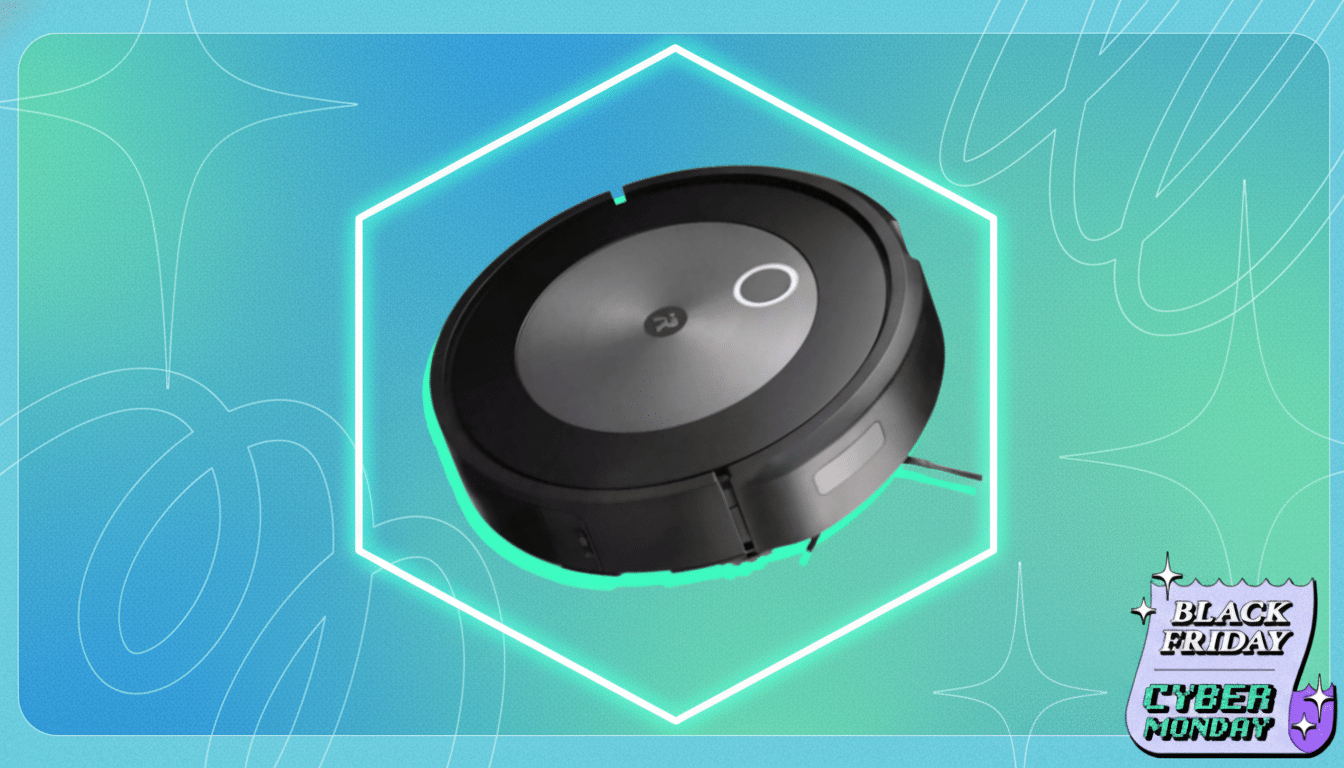Early Black Friday sales are in full swing at all the big retailers, but anyone hoping to score a great deal on a Roomba will be sorely disappointed.
So many iRobot price tags are blinking discounts, with only a few offers providing any meaningful discount next to equally discounted competition from Roborock, Dreame, Narwal and — what the heck — Ecovacs. Then add the uncertainty surrounding iRobot’s business outlook, and “worth it” becomes an even tougher bar to clear.

The Roomba Deals You Can Feel Good About
Among early deals, the standout is Roomba Plus 405 for around $399.99. As a midrange vacuum-mop, it pairs a solid feature set to the dollars: self-washing and -drying mopping pads, dual spinning pads that scrub out to the edges, and LiDAR mapping that guides this bot along its path. Its edge coverage provides a better toe-of-the-shoe arc than the older Roombas that have a retractable single pad, in actual tests, and it doesn’t wander off to the wrong room consistently.
Budget shoppers should consider the Roomba 105 line when it is on sale. The Roomba 105 Combo + Auto-Empty, at about $269.99, is the best use of my tech dollars: you get a rudimentary mopping function plus a dock that empties the dustbin so you’re not dumping detritus after every run. It’s a decent choice for small apartments that have only light debris on their hard floors and low-pile rugs, as long as you’re content never to get advanced object avoidance or any sort of pad washing.
Even if all you need is a basic vacuum, $149 is also fair for the bare Roomba 105 at rock-bottom pricing. Just manage your expectations accordingly: no room mapping, no mop pads, and you’ll be doing more of the manual babysitting yourself. At these prices, value is extremely important, and both of these deals clear that bar.
Why It’s Rare to Find a Good iRobot Deal
Two dynamics are at play. First, competition has tightened. Rival brands have built in obstacle avoidance, higher suction ratings, and robust mop maintenance stations at prices that were once iRobot territory. Category growth has moved toward these increasingly feature-rich systems, especially those from Chinese companies that iterate quickly and discount heavily, analysts say.
Second, iRobot’s strategic reset has dimmed long-term support. After the would-be buyer backed out of a planned purchase, iRobot unveiled deep cost cuts, changes in leadership, and plans to restructure, according to company filings. For buyers, that inevitably raises legitimate questions regarding firmware updates, app innovation, and turnaround time with respect to service and parts. There isn’t necessarily any kind of canary in the coal mine regarding Roombas that they will stop working, but even if similarly priced models guarantee faster development cycles and more onboard tech you use maybe a quarter of the time at best, the risk-reward calculus shifts.

There’s also a product gap. Several recent mid- and upper-midrange models from iRobot continue to forgo small-object avoidance unless you up the ante with pricier trims. It’s a tough pill to swallow when similarly priced competitors swerve around charging cords, socks, and pet waste with impressive precision. If you’ve ever unhooked a Roomba from a cable snarl, you know this is not a nice-to-have.
Models To Skip And Stronger Alternatives
Be wary of more expensive early “Max” Roomba bundles that don’t come with advanced obstacle avoidance, hot-water mop washing, or a pad lifter. If the ticket is high and the spec sheet looks light, you can typically do better.
The Roborock Q Revo, Narwal Freo Z10 Ultra, Dreame Aqua10 Ultra Roller, and Ecovacs Deebot T20/T30 lines generally provide fuller stations and quicker navigation at the same price or lower elsewhere. These types of systems typically come with floor-scrubber/polisher base stations, automatic detergent dosing, pad lifting so you don’t get the carpet wet, and obstacle avoidance that actually works. Head to head: Those capabilities minimize not only micromanagement but also the chance of mid-clean interruptions from obstacle collisions.
That being said, this isn’t Roomba getting blown out of the water across the board. iRobot still has an advantage in room mapping ease and app clarity, and its dual-roller brush system is a hair pickup champ. But with comparable pricing, the practical benefits of self-sustaining mops and consistent object detection are hard to overlook.
How To Shop Roomba Deals and Not Regret It
- Set clear price targets. For beginner-level Roombas, under $180 is reasonable for vacuum-only; under $300 is fair with auto-empty. For a vacuum-mop combo, search for sub-$400 if it doesn’t have obstacle avoidance or pad washing. The bad ones splash dirty mop water, the good ones wash and dry your mop ahead of time; they all pick up their own pads for washing.
- Check the support story. Verify warranty details, availability of replacement parts like rollers and filters, and that software features you care about aren’t locked behind subscriptions. If the answer is no, skim through recent app store reviews to see whether it’s been updated with the latest fixes in response to user complaints.
- Finally, compare like for like. If a Roomba is missing obstacle avoidance or mop maintenance but costs the same as a model from a rival that includes both, keep your wallet in your pocket. A handful of early iRobot discounts are also solid deals, and the rest are price cuts on the wrong feature set.
Bottom Line: The Early Roomba Deals That Are Worth It
The early Roomba deals worth taking advantage of are out there, they’re just outnumbered by mediocre markdowns. Favor the Plus 405 or the 105 Combo + Auto-Empty, or a heavily discounted basic 105, and hit pause on anything that’s asking premium coin without offering premium features. Thanks to the surfeit of robot vacuum deals on offer this holiday season, it may be smarter to think of iRobot deals as more like the exception than the rule.

